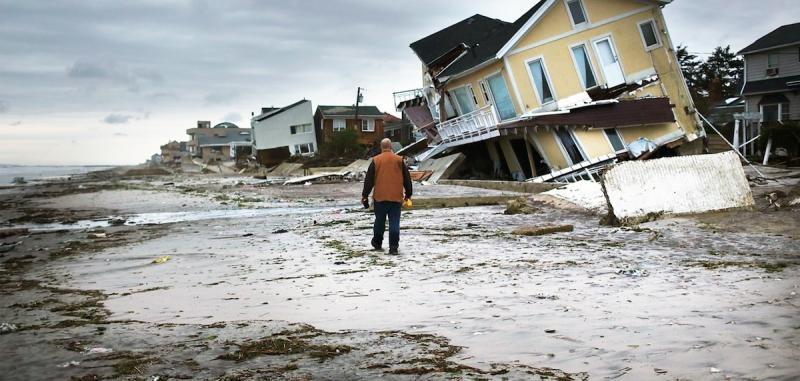Buildings and Structures
The impacts of climate change can pose significant challenges to existing built infrastructure. Many of our nation’s infrastructure elements—including buildings of all types, as well as components of our energy, transportation, water, and sanitation systems—were not built to withstand the impending range of climate conditions and increased frequency of extreme weather events projected for the future.
For example, mechanical systems may not be sufficient to cool homes and businesses during extreme heat, and stormwater management systems may not have the capacity to drain city streets after extreme precipitation events. Older roofs may be unable to support heavier snow loads associated with increased evaporation, and seals at entry doors and windows may be insufficient to resist the wind-driven rain of tropical storms.
Flooding and sea level rise also pose threats: they often result in scouring, which can compromise the integrity of structures’ foundations. Power outages may cause indoor temperatures to rise rapidly—or plummet quickly—to uninhabitable levels. And damages that result from extreme events can interrupt business continuity for months, potentially crippling a community’s economy. In 2015 alone, losses due to natural disasters in the United States totaled $26.4 billion. Compounding these issues is a swelling global population and rapid urbanization.
Climate-smart building
Site selection, infrastructure, availability of natural resources, and community services are all critical to a building or structure’s performance and functionality. In the planning phase—when designers assess the potential for damage, loss, or other impacts that can result when climate-related hazards affect people, property, natural resources, or the economy over the life of the building—they can make informed choices to meet the required functionality with an appropriate level of risk tolerance. With a thorough analysis of the building site, designers can set performance targets and design and implement appropriate measures to mitigate potential impacts.
The adoption, application, and enforcement of up-to-date model building codes is expected to reduce vulnerability, increase public safety, and afford at least minimal property protection. However, codes are based on historical data and do not reflect future risks, including the impacts of climate change.
Proactive zoning and land use policies that promote development in areas of relatively low vulnerability—combined with good design choices—can improve hazard and climate resilience. The utilization of performance-based design standards, integrated project delivery, building life cycle assessments, and green building rating systems are common strategies for enhancing levels of community resilience.
References
- Cutter, S. L., W. Solecki, N. Bragado, J. Carmin, M. Fragkias, M. Ruth, and T. J. Wilbanks, 2014: Ch. 11: Urban Systems, Infrastructure, and Vulnerability. Climate Change Impacts in the United States: The Third National Climate Assessment, J. M. Melillo, Terese (T.C.) Richmond, and G. W. Yohe, Eds., U.S. Global Change Research Program, 282–296. Accessed May 2016.
- Federal Emergency Management Agency, 2013: Local Mitigation Planning Handbook.
- Insurance Information Institute, 2016: Catastrophes: U.S. Accessed June 2016.
- The White House, 2016: Fact Sheet: Obama Administration Announces Public and Private Sector Efforts to Increase Community Resilience Through Building Codes and Standards. Accessed May 2016.

